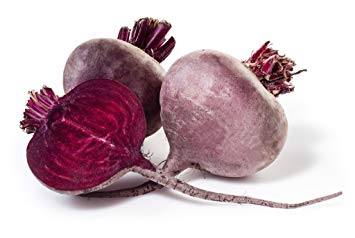[ad_1]
By Guest Author Josh Andrews
Many of us understand how important bees are to the whole ecosystem. That’s probably why we’ve seen an upsurge in people wanting to start urban beehives in cities and suburban areas. It’s no longer just the country folk who get to have all the fun of beekeeping.
Although beekeeping in cities has become popular in the last decade or so, there are instances of urban beehives right back to the 1950s. For many years, local ordinances restricted keeping bee hives within city limits, but many of these laws have been overturned, paving the way to keep a beehive in any backyard.
Read More
[ad_1]
Title: Growing Perennial Foods: Field Guide to Raising Resilient Herbs, Fruits, & Vegetables
Author: Acadia Tucker
Illustrator: Krishna Chavda
Publisher: Stone Pier Press

 Growing Perennial Foods: A Field Guide to Raising Resilient Herbs, Fruits, and Vegetables
Growing Perennial Foods: A Field Guide to Raising Resilient Herbs, Fruits, and Vegetables
Being a farmer isn’t easy. But one thing farmers seem to have in common is their love of the land, the food they grow, and the routine. It’s almost spiritual for some. In the 1st chapter of Growing Perennial Foods, author Acadia Tucker puts on her muck books and describes her morning routine Read More
Beets are a very diverse and nutritious root vegetable. They are packed full of nutrients including fiber, folate & Vitamin C. Due to their pigment and nitrates, they are known to lower blood pressure and aid in athletic performance. These delicious bulbous vegetables are not chosen as often as they should be so I thought I would share a few delicious things to do with them.
No matter what you decide to do with your beets you will need to cook them so here are some simple instructions for that:
#1: Use them as a salad topper on your favorite salad. To do this, you have to bake them first.
* Read More
[ad_1]
By Guest Author Michael Shewmake.
Can you grow your own coffee beans at home? Absolutely — it’s just a question of conditions and commitment.

 Coffee “cherries” on the plant. The fruit contains the coffee beans. Image by skeeze from Pixabay
Coffee “cherries” on the plant. The fruit contains the coffee beans. Image by skeeze from Pixabay
Serious coffee drinkers think nothing of grinding fresh, whole coffee beans every time they brew. Some people like an even deeper level of comittment by roasting their own beans at home too. But for total commitment to the process from bean to cup, nothing beats actually growing your own coffee Read More
[ad_1]
An herb prized for its soothing fragrance, dainty purple blossoms, and medicinal properties, lavender is a fairly low-maintenance plant but does have some specific needs to thrive.
“It’s not very different from a lot of other plants,” said Elizabeth Inman, owner of Purple Adobe Lavender Farm in Abiquiu, New Mexico. “In many cases, it needs less soil and requires a lot less fussing over. You don’t have to spend a lot of time in your garden with it. That’s the beauty of lavender.”

 Credit: Wikipedia
Credit: Wikipedia
Selecting a variety of lavender
More than 45 species of lavender are recognized by Read More
[ad_1]

 Even a small house on a city lot can plant a series of trees and woody perennials to capture carbon while creating a beautiful landscape.
Even a small house on a city lot can plant a series of trees and woody perennials to capture carbon while creating a beautiful landscape.
Climate change is almost too big a subject for us non-scientists to wrap our heads around. Melting ice caps, rising sea levels, record flooding, record drought, record heat – and new records set nearly every year. But climate change is simple to understand when your city, town or home is the subject of a cable news weather disaster headline.
Feeling helpless in the face of Mother Nature, many cannot come to terms Read More
[ad_1]
By Guest Author Laurence Bennet
If you’re fed up with pushing the mower around every weekend or just want to save water and maximize the ecological capacity of your lawn, a no-mow lawn is a great choice.
Fed with lawn fertilizer, sprayed with hundreds or thousands of gallons of water, and trimmed with lawnmowers that often release dangerous pollutants, most traditional lawns are not particularly ecological. And to maintain what is effectively a large monoculture of one or two species of grass, which are often non-native, traditional lawns usually rely on fertilizers, pesticides, herbicides, and at the very least, frequent maintenance.
Read More
[ad_1]
By Guest Author Nic Campesi
Rubber tire mulch is a popular choice for gardeners and landscapers to help insulate plants, keep insects at bay, and stop weed and fungal growth. But is it safe for plants and soil, and most importantly, safe for you?
On its surface, rubber tire mulch seems like a good idea for gardening and landscaping – reduce, reuse, and recycle old tires sitting in landfills. But according to gardening myth buster Linda Chalker-Scott, Ph.D., Horticulturist and Associate Professor at Puyallup Research Center, Washington State University, rubber tire mulch shows significant toxicity to plants and soil and is ineffective in suppressing weeds.
Consumers Read More







